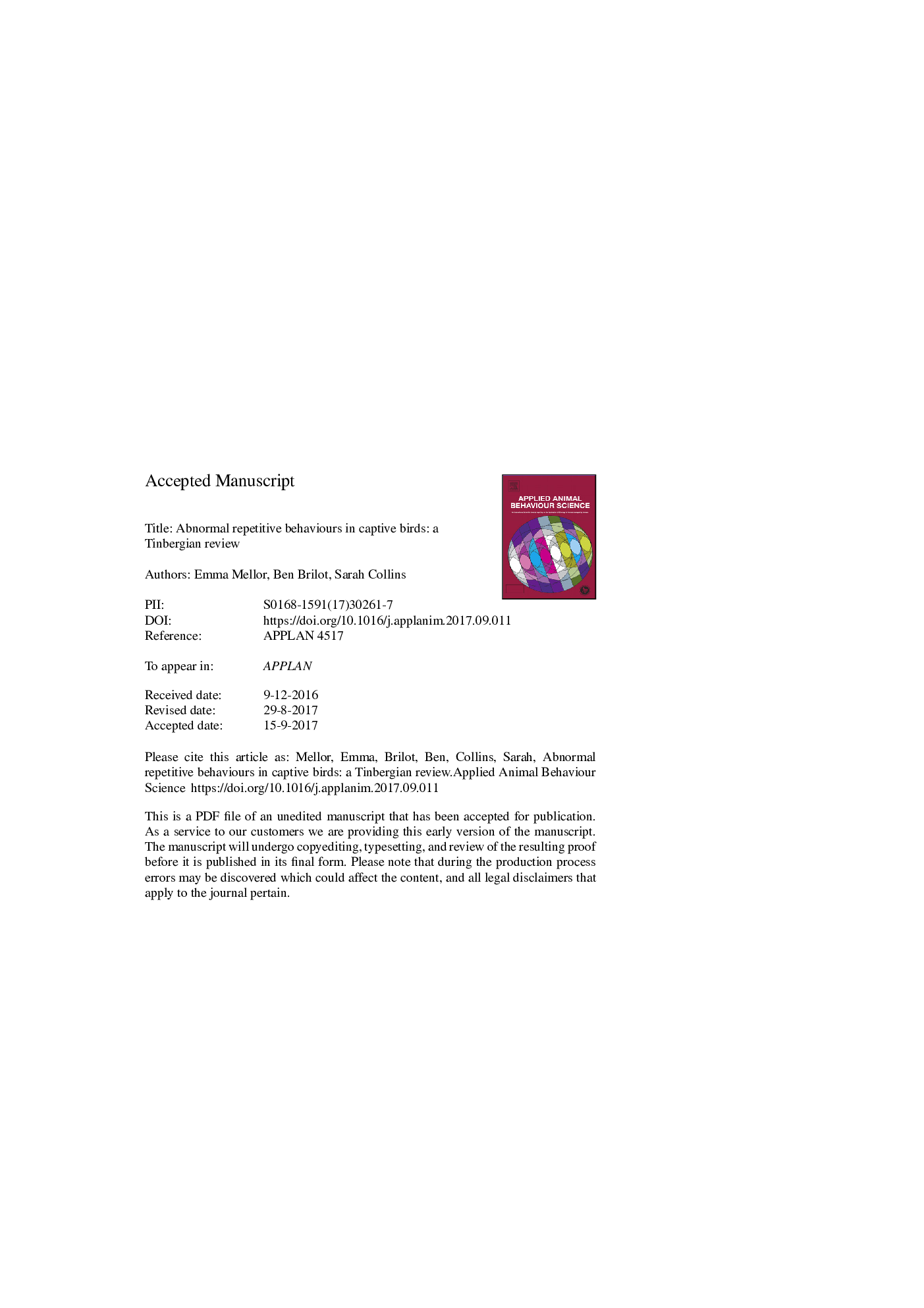| کد مقاله | کد نشریه | سال انتشار | مقاله انگلیسی | نسخه تمام متن |
|---|---|---|---|---|
| 8882872 | 1625308 | 2018 | 62 صفحه PDF | دانلود رایگان |
عنوان انگلیسی مقاله ISI
Abnormal repetitive behaviours in captive birds: a Tinbergian review
دانلود مقاله + سفارش ترجمه
دانلود مقاله ISI انگلیسی
رایگان برای ایرانیان
کلمات کلیدی
موضوعات مرتبط
علوم زیستی و بیوفناوری
علوم کشاورزی و بیولوژیک
علوم دامی و جانورشناسی
پیش نمایش صفحه اول مقاله

چکیده انگلیسی
Abnormal repetitive behaviours (ARBs) are associated with past, or present, welfare problems and are common elements of the behavioural repertoire of some captive animals, including birds. Millions of birds from hundreds of species are held in various captive settings, yet most avian ARB research to-date focuses on just a handful of these. Therefore, our knowledge of ARBs and, by implication, welfare, of a taxonomically diverse range of avian species is poorly understood. The purpose of this review is to begin to address this by providing a useful overview of ARBs across captive avian species. Taking advantage of the research effort on well-studied species, we pool current findings relating to avian ARBs into a coherent framework, highlight gaps in understanding, and use this to give a reference point for future research in both these and other species. We adopt Tinbergen's 'Four Questions' approach to comprehensively consider ARBs from each of his four perspectives. We begin with presenting studies on ARB development, describing how physiological predispositions and early-life housing and experiences impact ARB risk in later life. Next we outline internal causal triggers for ARBs, such as the effects of neurotransmitters, hormones, and dietary deficiencies, and discuss external, environmental triggers for ARBs. In the evolution section, we detail the influence of species' evolutionary history on ARB, and use findings from early molecular studies on laying hens to discuss heritability and genes associated with ARB. The benefits of using cross-species studies to determine underlying evolutionary drivers of ARBs are also illustrated with an example from Psittaciformes. In discussing ARB 'function', we make two tentative suggestions for potential examples of ARB performance allowing a bird to cope, and also consider situations where ARB may be functionless. We then summarise, and discuss, these four interacting perspectives on avian ARBs. To finish, the benefits of Tinbergen's approach are shown in a worked example of an ARB in one species, demonstrating how this valuable framework leads to the most complete understanding of ARB. Thus, by utilising Tinbergen's Four Questions, our review provides a platform for future research on avian ARBs, to lead to a better understanding of ARBs in both well- and poorly-studied species, and to solutions/preventive measures to improve avian welfare.
ناشر
Database: Elsevier - ScienceDirect (ساینس دایرکت)
Journal: Applied Animal Behaviour Science - Volume 198, January 2018, Pages 109-120
Journal: Applied Animal Behaviour Science - Volume 198, January 2018, Pages 109-120
نویسندگان
Emma Mellor, Ben Brilot, Sarah Collins,